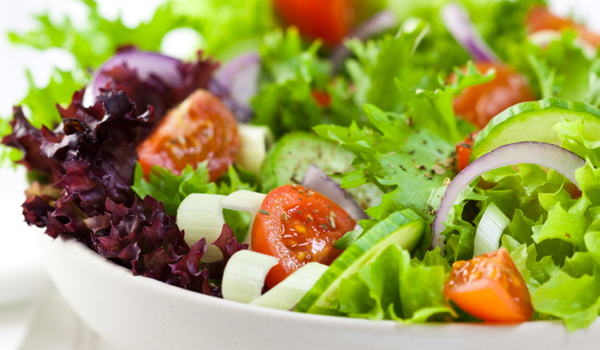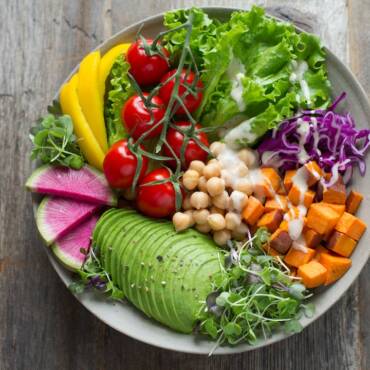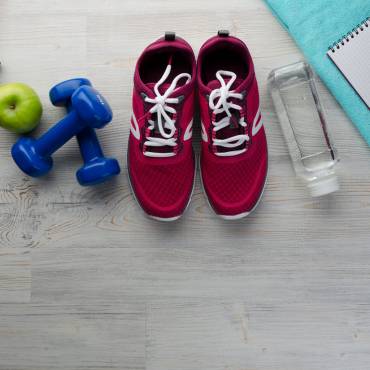Easy Ways To Cut The Calories
To assist with weight loss and weight management the body needs to produce a deficit in calories, a 500 calorie deficit each day is required to lose 1lb of body fat over a week. Losing 1lb per week is a sensible amount of weight to loss, as it will encourage weight loss gradually and keep weight off in the long term. There are some easy ways to change to healthier foods and alternative cooking methods such as steaming and baking, these changes will all contribute to reducing calories without compromising on taste.
Snack Attack
Avoid pastries and muffins as these are packed full of calories due to the high sugar and fat content, cakes which contain cream and chocolate are also high in calories. Malt loaf is a healthier cake option due to the high fibre content, dried fruit and the fat content is minimum. Jaffa cakes are also a healthier option as they contain only 40 calories, some biscuits are 100 calories or more per biscuit. High fibre crackers such as oatcakes and ryvita are low in calories between 30 and 40 calories per cracker and will also satisfy appetite. Choose toppings which are high in protein for crackers and bread such as low fat cheese, low fat hummus and peanut butter, as high protein foods have been scientifically proven to suppress the appetite and therefore assist with weight management.
Many varieties of crisps are high in calories but switching to Snack-a-Jacks or oatbakes will offer a healthier option and a tasty alternative. Crudities with salsa dip and hummus dip are lower in calories for buffet food, compared to sausage rolls, pork pies or vol eu vonts which are loaded with calories and saturated fat.
Dairy
By changing from full fat milk to semi skimmed milk or skimmed milk will reduce the amount of calories consumed without affecting the calcium content. Avoid high fat creamy yoghurts and choose lower fat fruit yoghurts or natural yoghurt and add berries or other preferred fruit for extra sweetness. Select lower/low fat cheese such as cottage cheese (low fat variety), quark, low fat edam, feta cheese and goats cheese. Use low fat natural yoghurt instead of mayonnaise to add to salads, to mix in with tuna or added to curries to provide a creamy texture, without the extra calories which is provided by cream.
Spread and Oils
It is necessary to monitor the intake of fats in the diet as fats contain double the amount of calories as protein and carbohydrates. Unsaturated fat options should be included in the diet for example; olive oil based spread, rapeseed oil, canola oil and sesame seed oil instead of using butter. Use spread sparingly, lightly spread onto bread and crackers. A tablespoon of oil counts as a portion.
Vegetables
Steaming vegetables will keep the calories low and will retain the taste and nutritional value. Include salad as part of your lunch and evening meal and munch on raw vegetables as a snack, these are very low in calories and are packed full of vitamins and minerals. When oil is needed for vegetables, for example to make roasted vegetables, drizzle rapeseed oil or sesame seed oil over a tray of vegetables before cooking. Only a tablespoon of oil is required for stir fry vegetables. If a sauce is being added to vegetables there is no need to add oil, steam vegetables or simmer in a small amount of water, drain water before adding the sauce.
Drinks
As water contains no calories choose this drink over carbonated drinks or fruit juice (those which are concentrated). When the body is dehydrated the mind thinks that the body is hungry so ensure that you are well hydrated, the recommendation is 2 litres of water per day. Additional water needs to be consumed in particular when the weather is warm and when exercising. Milk is also lower in calories (due to the high water content) and is packed full of protein and vitamins.
Alcohol
Alcohol can contain a lot of calories and provide very little nutritional value. Drinks in particular to avoid are some beers and creamed based spirits as they are high in calories and should be kept to a minimum. When drinking spirits choose low calorie soft drinks to accompany them including diet drinks, diluted fruit juice and also tonic water, which will keep alcoholic drinks lower in calories. Wine and champagne contain fewer calories than beer and spirits but it is important that portion control is considered, 125ml is regarded as a portion and 1 unit.
Portion Control
Avoid buying large bags of food and big cartons/bottles of drinks as you will be more likely to overindulge on them. However, this can be expensive, if you are disciplined divide foods into smaller bags to represent portions. Pour non-carbonated drinks into individual containers to keep the portion size controlled and monitored.
Similar Posts:
- Easy Ways To Cut The Calories
- Eat To Recover – Ingredients And Meal Ideas
- Is Your Healthy Food Really Good For You?
- 5 “Healthy” Foods That Might Surprise You
- Post-Run Snacks For Runners And Weight Loss
- Build A Healthy Salad To Fuel Running Training







Add Comment